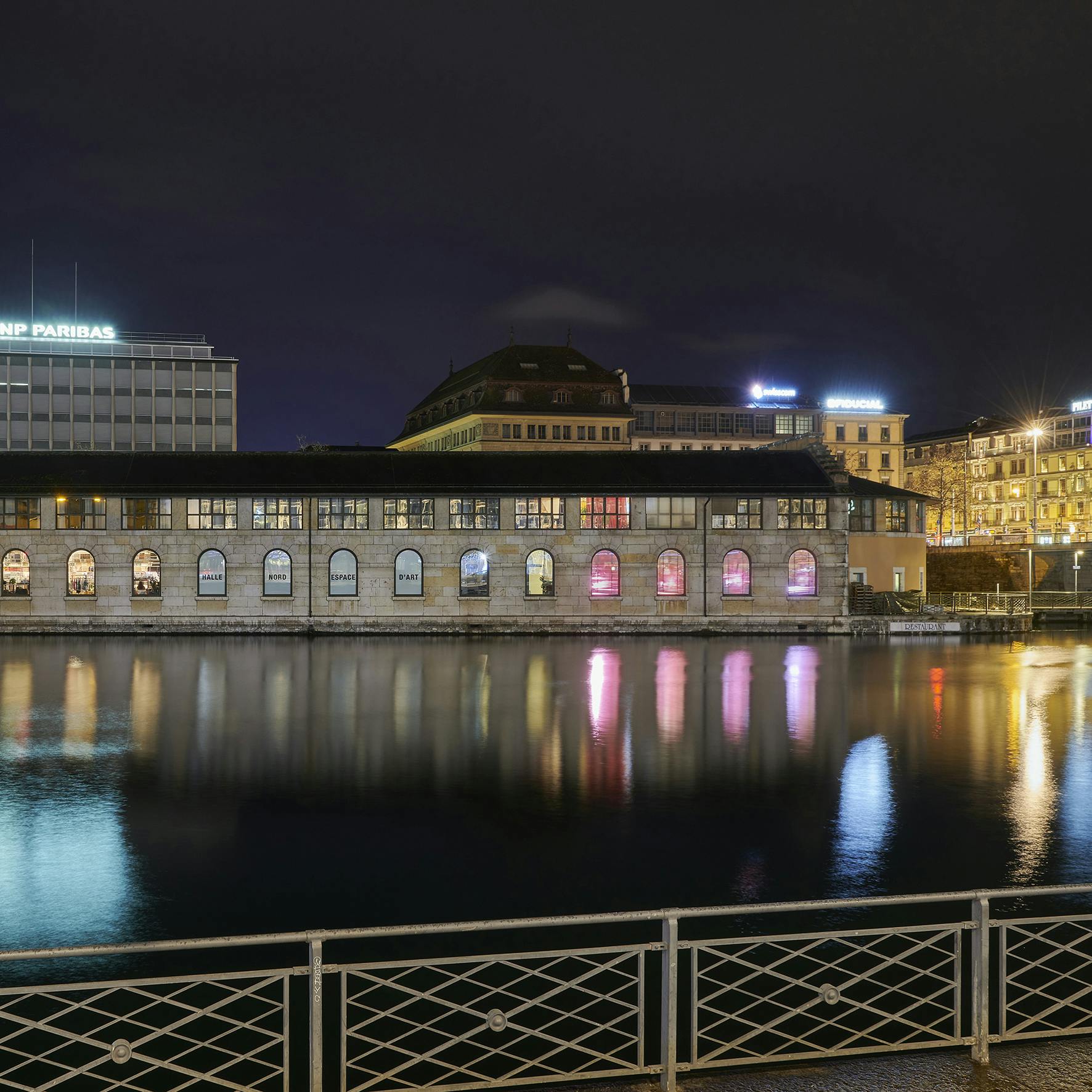
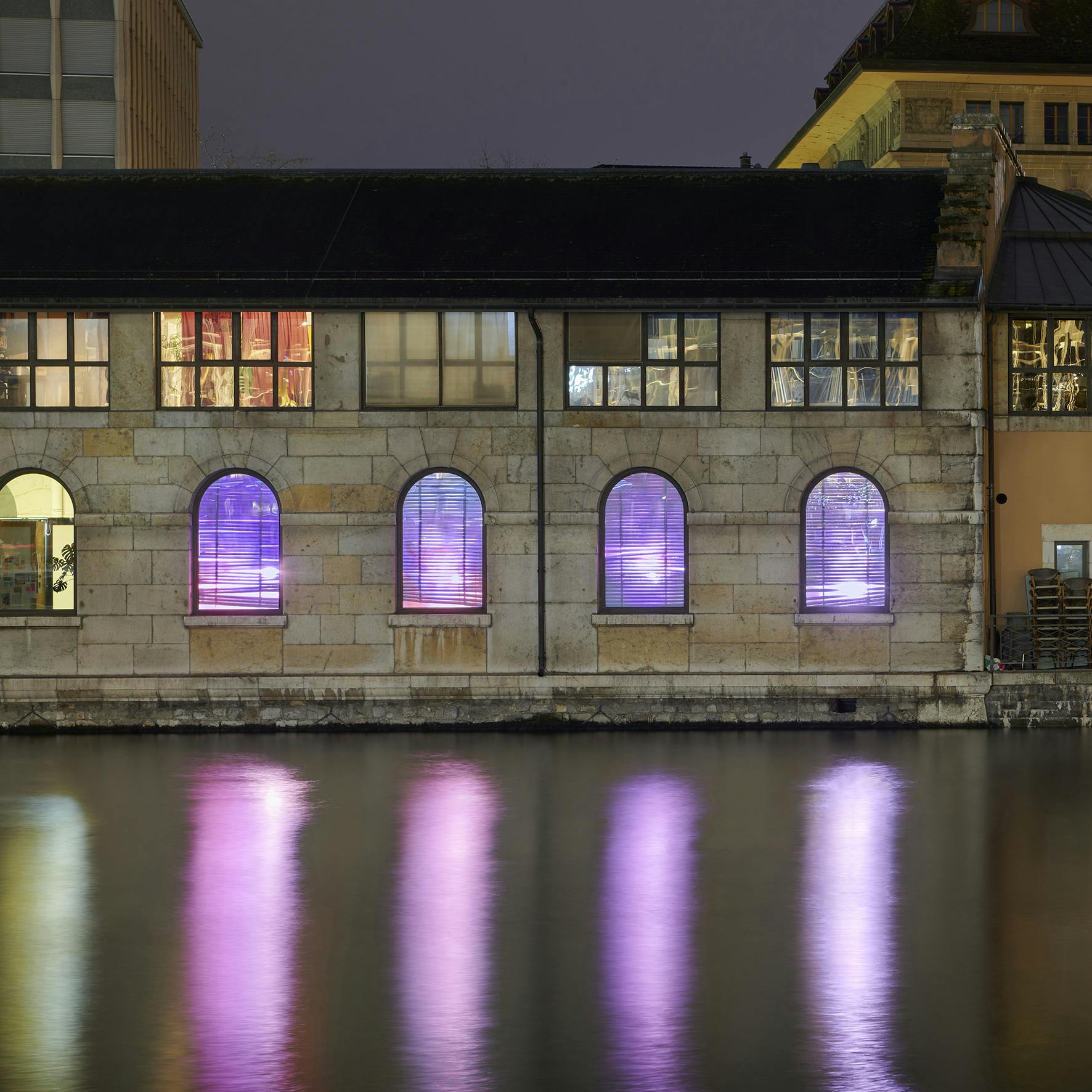
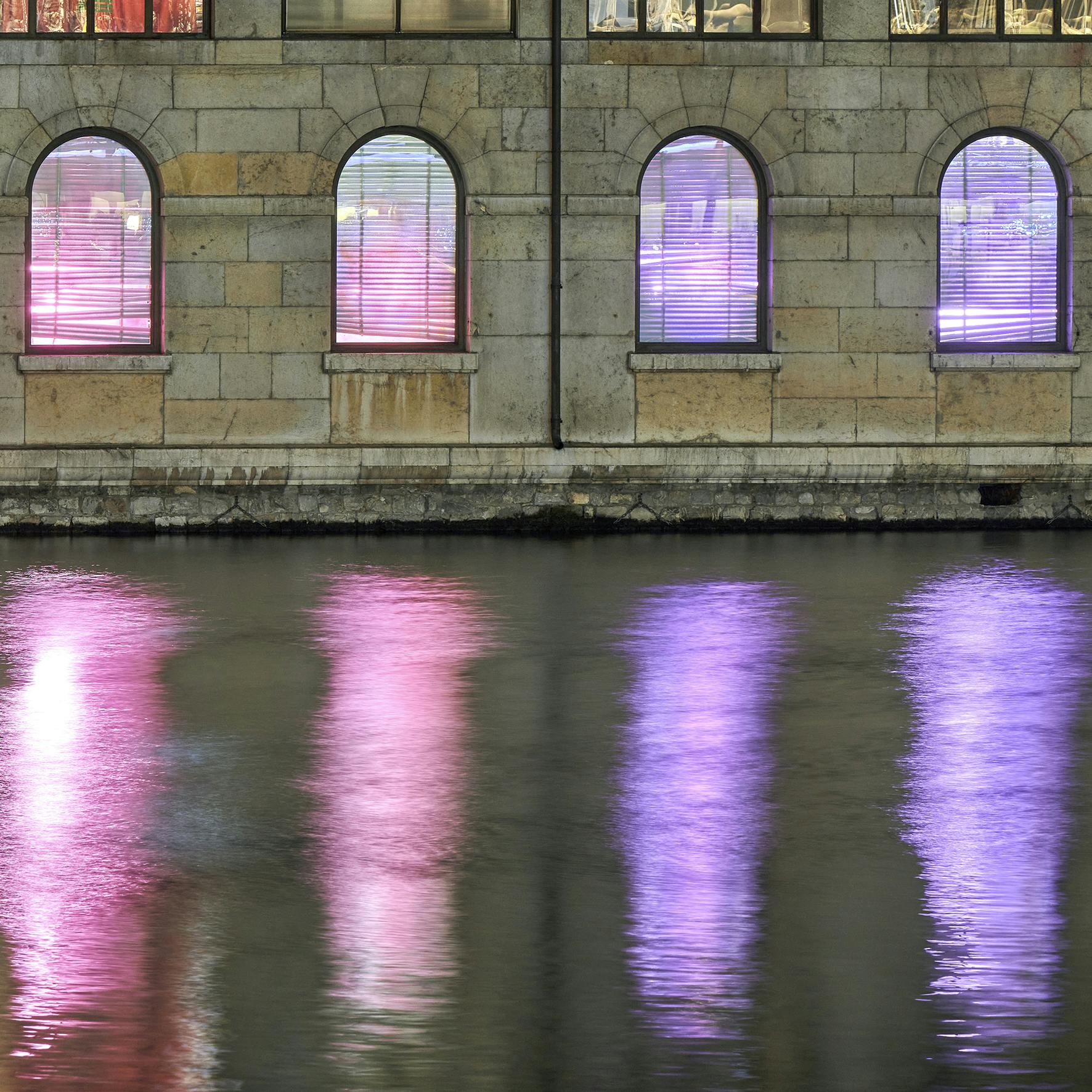
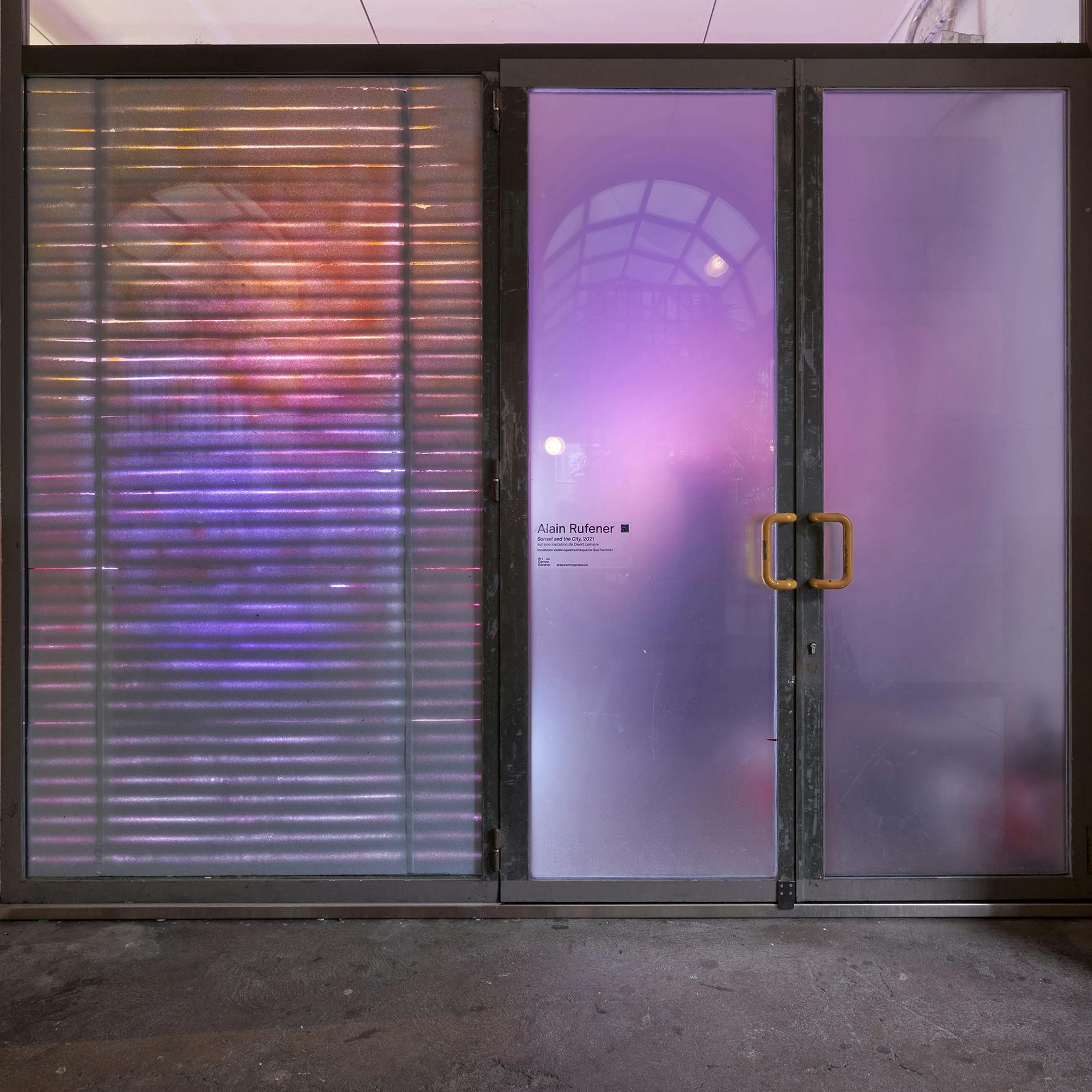

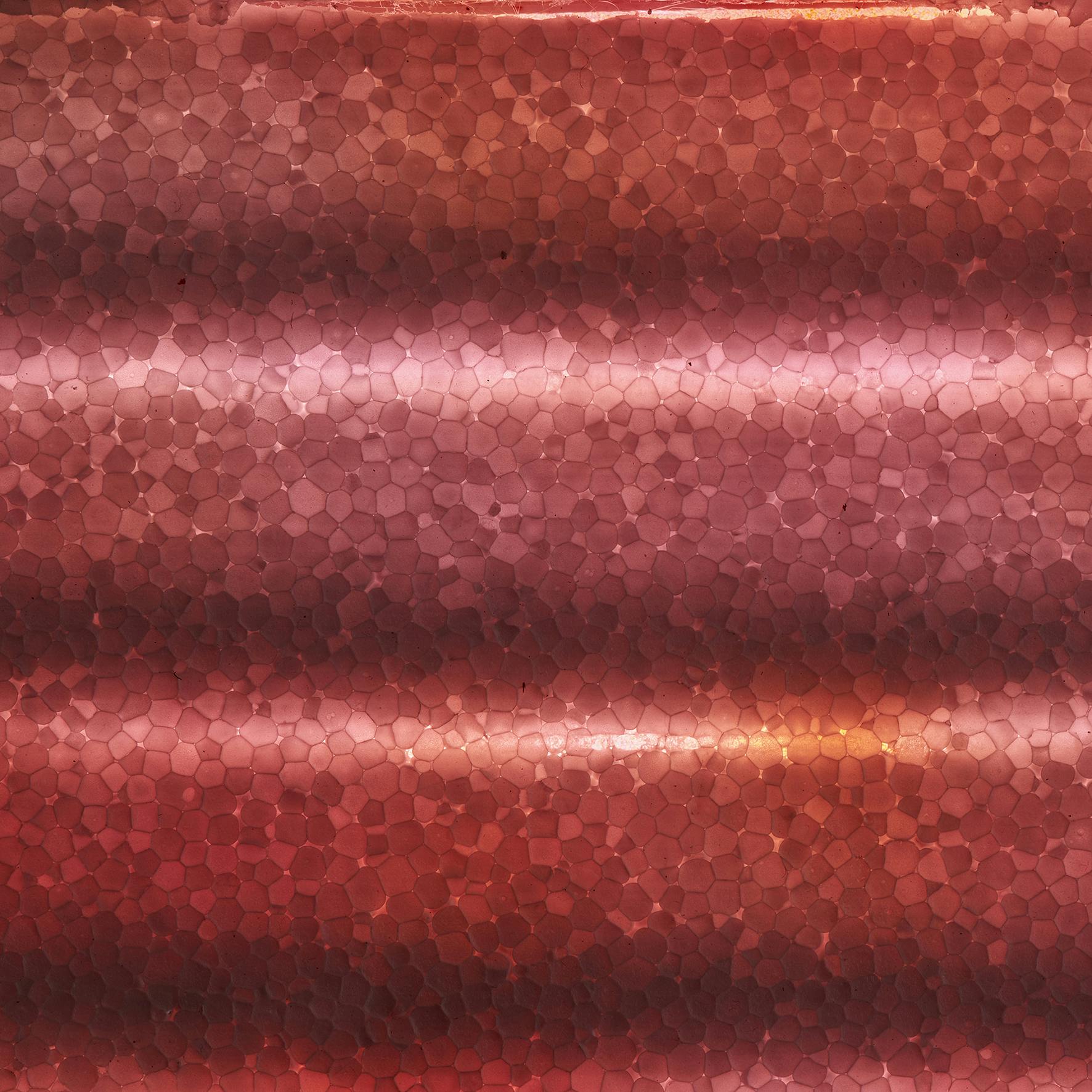

Sunset and the City, 2021
Alain Rufener’s Sunset and the City is an installation made up of polystyrene panels branded with a red-hot iron to create horizontal lines reminiscent of the slats of a Venetian blind. On the reverse side, preprogrammed moving lights let spectators imagine some hidden activity behind the shutters. As a trite paradigm of conventional romanticism, sunsets evoke the idea of escape without surprises – the kind sold to us by travel agencies. But the glamourous and romantic title and colours are quickly contradicted by the brutal nature of piercing the Venetian blinds (aka, "jalousies”) as seen by their blackened edges.
This installation insists on the artificiality of its construction and the disenchantment it welcomes with open arms, which is a way of accepting that a hastily built DIY ersatz is worth as much – if not more – than the real experience it has made inaccessible.
David Lemaire
Full text / @alainrufener
Born in 1988 in Neuchâtel, Alain Rufener one day decided to leave his canton to be able to develop his experiments. After studying at La Chaux-de-Fonds’ École d’arts appliqués, he spent some time in Brussels and Ticino for professional internships in fashion. But it wasn’t long before he switched to visual arts to develop his creativity. And, in 2013, blast off: an exhibition at Trait Noir in Fribourg, followed by one at La Locomotive in 2015, back in his native La Chaux-de-Fonds. Then, in 2016, he combined his two loves in a fashion show featuring his capsule collection of textile prints, which toured Galerie C, as well as the Centre d’art QG in La Chaux-de-Fonds. His desire to experiment with printing techniques became reality at the 2016, 2018 and 2019 QG creator and designer markets.
Lastly, since 2020, he has developed and refined his artistic vision, resulting in winning the Jury Prize at the 2021 Biennale d’art contemporain, which took place at the Musée des beaux-arts de La Chaux-de-Fonds.
©Isabelle Meister (portrait)
©Thomas Maisonnasse
Alain Rufener
le spéléologue du chaos intérieur